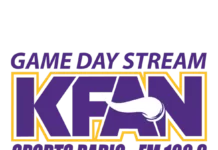
(By Rick Fink) In last week’s column, we said you would probably rather endure a root canal than hear your prospect say, “We like your presentation but…” In today’s, we’ll explore the first five of the 10 Things You Can Do After Your Client Says No.
Step 1: Never Take “No” Personally
Structure your presentation so that “no means no” to this particular presentation, this idea, or this particular time – not you personally. If you are a professional media rep and not just schlocking packages, when the client says “no,” they are the loser, not you, because you are simply offering to solve their problems.
Never let your tone or body language convey disappointment after “no.” Instead, change your posture and demeanor to one of curiosity and sincere interest.
Step 2: Take Responsibility for the “No”
Generally, getting a “no” means you missed a “no” earlier in the process. After “no,” you need to retrace your steps to find the “no” you missed along the way.
Take responsibility for the no with questions like:
- “Did I misunderstand your goals?”
- “Can you help me understand why my proposal isn’t appropriate at this time?”
- “Perhaps you misread the prospect’s goals or budget.”
Did you establish rapport? Did you build your brand and credibility before making the presentation? Did you relate to the buyer’s style? Or… Has something changed since you conducted your initial Customer Needs Analysis?
Never argue and never try to prove the prospect is wrong. Always ask questions to discover where you missed the mark. To take responsibility for “no,” you must understand the root cause of ALL no’s. Your prospect did not agree to sit still for your presentation because they had no interest. Assuming you are talking to the real decision maker, “no” really means, “You have not convinced me that I will get a return on my investment”.
There are two main reasons why business owners say “no.” One is that you have not convinced your prospect that you will increase their sales. The second reason is that they don’t trust you. Your stations or you have not established enough credibility for them to say yes, even though they may like your ideas.
Business owners are entrepreneurs by nature and seek to minimize the risk in every investment. If they trust you, entrepreneurs will sell their cars or borrow from their mothers if your presentation convinces them their investment will pay off.
A “no” can only be turned into a “yes” when your prospect wants to achieve the goals you have identified and when they believe your solution is cost-effective. You made your proposal because you believed it was good for the prospect, and now you need to take responsibility to learn why it missed the mark so you can make a better presentation the next time.
Step 3: Be Prepared to Negotiate
Some buyers say “no” as a negotiation tactic to capture a better deal.
Always build enough into your presentation to leave room to maneuver. Never offer so much value-added or other perks in your initial presentation that you have no room to sweeten the pie. Again, ask questions to determine if this is a negotiation tactic. Questions like, “What would we have to do to make our proposal work for you?”
Be prepared to practice our Negotiation 101: never give one without getting one.
If your prospect asks for a lower rate, you can’t concede without changing the rotation, asking for a longer commitment, or some other concession.
Step 4: After “No,” Always Leave the Door Open
If you have not been able to turn the no into a yes, get agreement on the next steps, again through questioning. Use questions like, “Now that I have a better understanding of your situation, may I make an appointment to do another presentation that addresses your concerns and achieves your objectives?”
Always try to get agreement on a specific timetable for the next steps.
Step 5: If the “No” is a veiled “No”
If the answer is, “I have to think about it” or, “I have to talk to my partner or accountant”, ask questions to remove the veil. Questions like, “What is it in our proposal that requires more thought?” or, “May I have the opportunity to meet with you and your partner to explore this further?”
In next week’s article, we’ll address the rest of our 10 things to do if your prospect says “no.”
Rick Fink from ENS Media can be reached at 605-310-2062 or [email protected]. Read Rick’s Radio Ink archives here.






